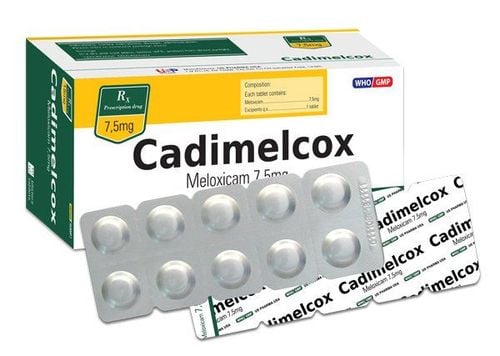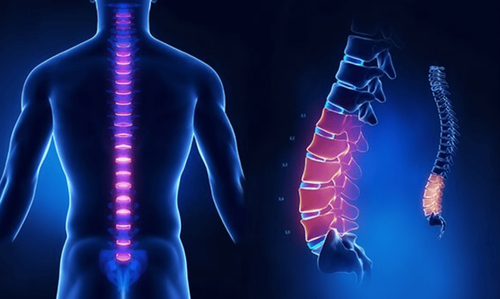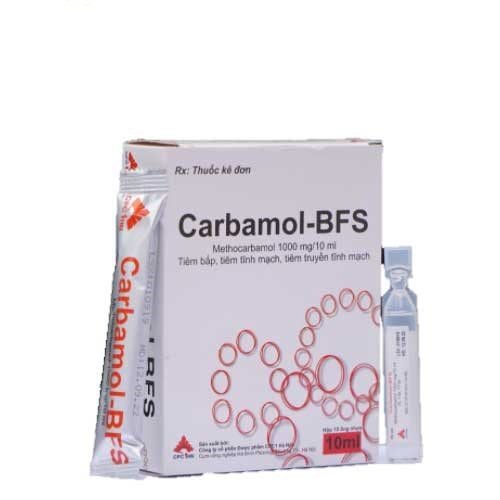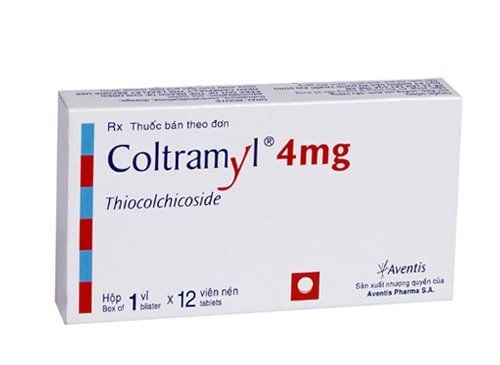This is an automatically translated article.
Epidural injection for lumbar nerve root pain is a minimally invasive method that intervenes in the affected area to relieve pain and anti-inflammatory. This technique is simple and highly effective.1. Lumbar nerve root pain disease
Lumbar nerve root pain is a common disease in the field of neurology and internal medicine, the disease is becoming more and more common in all genders and all ages.
When the sciatic nerve roots are compressed, the patient presents with “radicular pain”, spasmodic pain, such as electric shock, pins and needles, which increase with exertion (coughing, straining, sneezing...) when changing. Change positions or stand for a long time. In particular, pain spreads along the path of the irritated nerve root, depending on the location of the compression. The causes of lumbar nerve root pain are very diverse, the most common cause is the impact and pressure from herniated disc disease, long-term back pain leads to irritation and inflammation of the nerve roots.

Đau rễ thần kinh thắt lưng có thể gặp ở mọi lứa tuổi
2. Epidural injection to treat lumbar nerve root pain is highly effective
2.1. What is epidural injection? An epidural injection is the introduction of medication into the space around the spinal cord (epidural space) to temporarily reduce inflammation caused by a herniated disc. The injection can reduce pain and swelling in or around spinal nerve roots, as well as around damaged nerves that have not been able to heal in time.
To determine the exact injection site, the doctor may use a fluoroscopy or CT scan. This will help the doctor identify the specific area of pain so that the patient gets the maximum treatment benefit from the injections.
Many cases of severe, terrible pain spreading along the lumbar spine, difficulty in living, unable to walk on their own. After the treatment according to the epidural injection regimen, the patient was able to move normally again, the pain was significantly reduced.
2.2. Advantages of epidural injection This is a simple technique and very effective in many cases of acute pain, is less invasive, preserves the disc and reduces the proportion of patients requiring surgery. Epidural injection will be indicated for the following cases: Herniated disc or bulging disc that damages nerves. Failure of herniated disc surgery causes chronic back or leg pain. Spinal nerves, vertebrae and surrounding tissues are injured.
The method is contraindicated for the following cases: Inflammation, ulceration, infection of the injection area; severe damage to the lumbar spine, such as spondylitis, vertebral cancer...; Coagulation disorders, taking anticoagulants and contraindications related to advanced peptic ulcer, gastrointestinal bleeding, uncontrolled diabetes.
2.3. What to prepare before epidural injection? Before an epidural, you may not be able to eat or drink anything for several hours before your epidural procedure. This has the effect of preventing abdominal pain after the injection. The patient may be asked to defecate or use medication to defecate before the epidural injection is performed.
When administering the injection, you will be placed on a fluoroscopy or CT Scan so that the doctor can easily identify the injection sites. An epidural injection is a surgical procedure. The patient can go home after the injection or after the anesthetic wears off. However, you should not drive or go home on your own, as this can be dangerous. So ask a relative or friend to drive you home after this procedure.
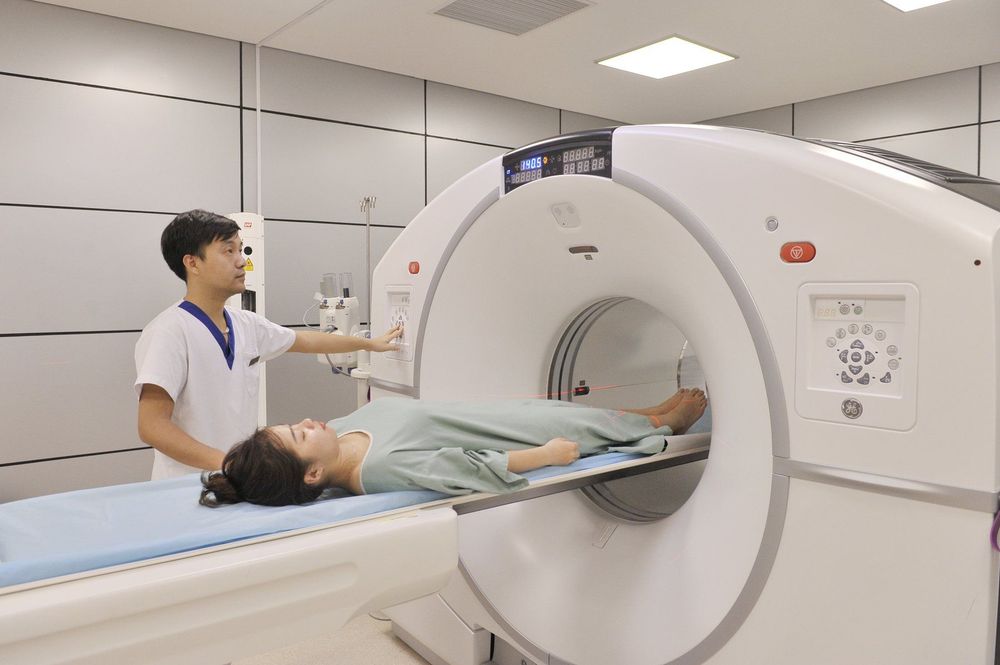
Bệnh nhân được chụp CT Scan để bác sĩ dễ dàng nhận biết các vị trí tiêm
2.4. Steps to conduct epidural injection technique Step 1. Patient's position
Lie on your side in a relaxed state, back facing out close to the bed, legs bent to the chest to bend and stretch the lumbar spine.
Step 2. Needle puncture position
Intervertebral space L5 - S1.
Step 3. Carry out the technique
Disinfection: The doctor washes his hands with an antiseptic solution, wearing sterile gloves. The nurse disinfects the injection area twice with iodine alcohol, then disinfects a third time with 70 degrees alcohol.
Choose the location of needle puncture: The doctor uses the thumb of his left hand to press along the spines in the lumbar region, determine the intervertebral space L5-S1 (equivalent to the iliac crest). Needle puncture into the epidural space: The doctor uses the right hand to hold the needle to probe, quickly insert the needle through the skin in the intervertebral space L5- S1, then gently insert it, after passing through the yellow ligament, a needle will be felt. If there is no fluid coming out, check to see if the needle is in the correct epidural position. Check that the needle is in the correct epidural position. Intradural Infusion: Once the needle is secure in the epidural space, slowly inject approximately 3ml of Hydrocortisone acetate or 40mg of Depo medrol. Withdraw the needle, apply pressure to stop bleeding at the site, disinfect it, and bandage the puncture wound with sterile gauze. Let the patient rest for 10-15 minutes in bed. Do not wash the injection area with water within 24 hours, remove the bandage after 24 hours, avoid excessive movements in the first days after treatment.
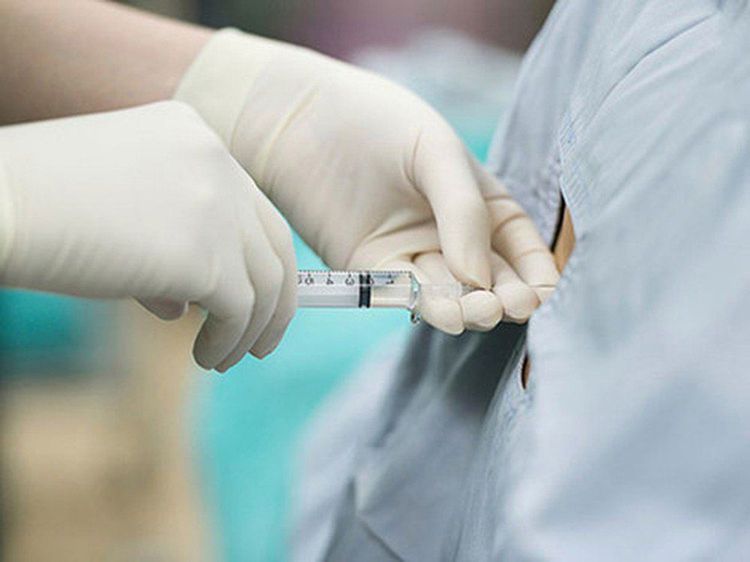
Tiêm ngoài màng cứng cho bệnh nhân
2.5. Normal/abnormal manifestations after injection Normal manifestations:
Local pain 1 - 2 days Numbness in the lumbar region of both legs 1 - 2 days. Abnormal manifestations:
Bleeding at injection site, rapid pulse, low blood pressure, cold limbs Decreased leg movement Fever. When there are abnormal symptoms above after surgery, the patient should immediately return to the doctor for timely diagnosis and treatment. This method requires the doctor to have specialized technique and feel the essence of the hand. When inserting the needle and adjusting the needle correctly into the epidural frame. The technique is simple, but requires extreme caution, not hastily, but inserts the needle too forcefully into the subarachnoid space.
Currently, this method is routinely performed at Vinmec Hai Phong International General Hospital with modern machinery and equipment, with an ultrasound machine to locate the entrance, good aseptic work has carried out hundreds of cases. This procedure has a 90% success rate.
Doctor Pham Thi Son is currently a Doctor of Neurology, Department of Medical Examination & Internal Medicine, Vinmec Hai Phong International General Hospital, has 20 years of experience in the field of neurology. In particular, the doctor has a lot of experience in diagnosing and treating diseases such as: cerebrovascular accident, spinal disc herniation, parkinsonism, epilepsy, peripheral neuropathies, headache, dizziness, etc. sleep disorders...
Please dial HOTLINE for more information or register for an appointment HERE. Download MyVinmec app to make appointments faster and to manage your bookings easily.






